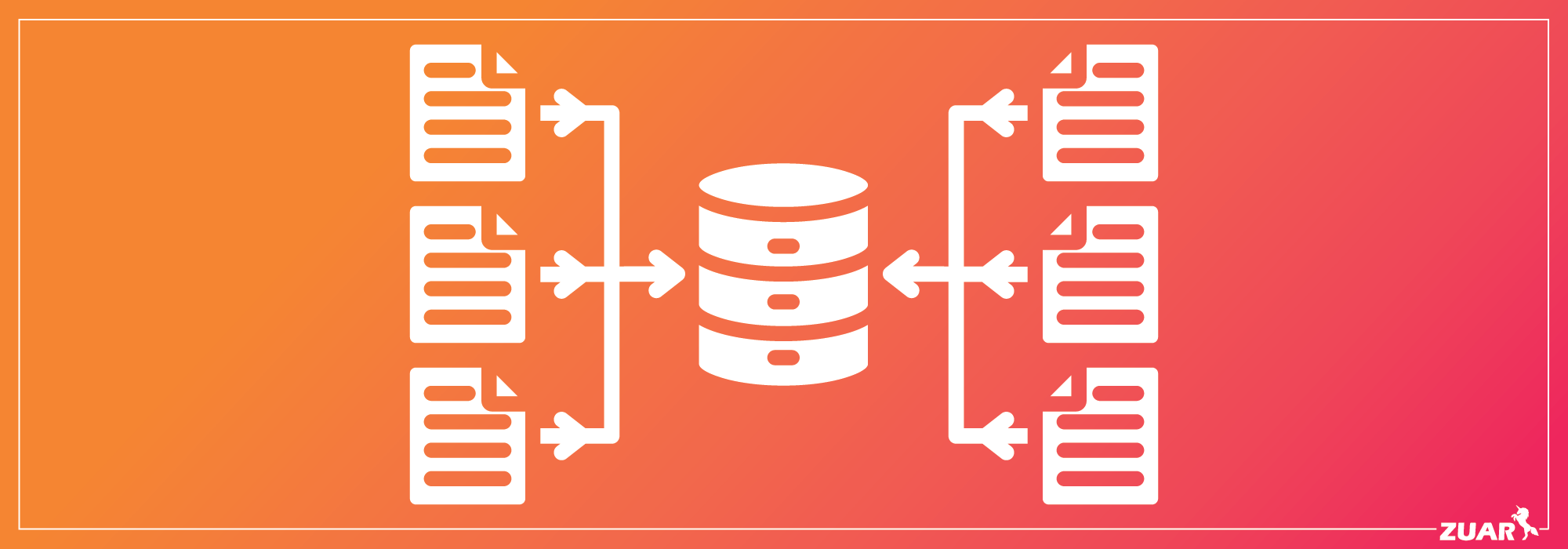What is Data Integration?
Data integration systems bundle together your data from all of your different programs into cohesive information that helps your business intelligence.

Overview
How many systems does your business use to operate every day? It may take a few minutes to name them all. Most companies use an excess of programs for their CRMs, email software, cloud data storage, and remote work platforms. All of these come with their own complex data and information sets.
Key performance indicators from your new marketing campaign, quarterly sales metrics, and website traffic numbers are just a few important pieces of data that can all take a good deal of time to track down and synthesize on their own.
Data integration systems bundle together your data from all of your different programs into cohesive information that helps your business intelligence.
Creating actionable information and intelligence from the raw data lying dormant in your company’s systems is something that can transform a dizzying array of unorganized data into neatly calculated business decisions.
Related Article:


Data Integration is an Essential Tool for Business Success
Having fast access to data from all of your platforms and systems in a uniform layout can be a game-changer when it comes to analyzing how things are going.
Information from internal and external programs -- from Microsoft 365 to Mailchimp to the Google suite -- can all be extracted and pooled together to form one place where you can view the numbers you need.
A new place where you can find unified data is a healthy way to evolve a growing company. Data integration can make business reports and analysis a much easier task thanks to ending the need to comb through various programs, websites, and accounts for individual numbers.
Instead of using this time-intensive process, data integration utilizes a master server to request all necessary information from these systems and collects it into one place for the client.
Heard enough to know your company can benefit from a data integration platform? Learn more at Zuar to improve your data strategy IQ.


Promotes Cohesion and Reduces Friction
Your employees will need access to data to complete meeting presentations or projects. Data integration improves collaboration within companies by simply providing access to vital information that is presented in a uniform way to your IT, marketing, sales, and administrative personnel alike.
Operating with the same information at the same time prevents breakdowns with one of the most common problems in business: communication.
Data integration cuts through some of the fog of dynamic business environments, enabling us to have a clearer vision of the status of projects, budgets, and much more.

Provides More Data In Less Time
Data integration automates the process of rounding up key information and statistics that are pertinent to day-to-day operations. This carves out chunks of time that were previously spent on assembling data from various platforms that can now be allocated to more productive work.
Not only will the data be more readily available, but the quality of your data will also improve over time because it is easier to identify discrepancies in the information that is being collected.
For instance, now that you can see the data on the types of widgets that were sold this month, you notice that this number doesn’t reflect sales from another source. This can improve your decisions moving forward with higher-quality data.


Simplifies Business Intelligence (BI)
Data integration improves the business intelligence process by enabling leaders to make more high-level decisions with the best information possible. It also frees up essential players like your developers and leaders to spend less time digging through data and more time visualizing it.
BI isn’t usually the process of extrapolating data for future projections but describes the data and any inefficiencies by examining it in real-time.
Focusing on BI as a company leader or owner is one of the best ways to maintain a competitive advantage in your industry.

Common Data Integration Strategies for Businesses
Hopefully, by now, you are convinced that business integration holds the key to more efficient data-driven decision-making. For a more thorough understanding of it, here are the different types of data integration:
- Manual - In this type, an individual or a group manually collects all the pertinent data and inputs it into a central platform or “warehouse.” Manual data integration is antithetical to the benefits of automating this process we have talked about so far. The inconsistent manual data integration only makes sense for the smallest organizations that may only use two or three systems.
- Application-based - This approach is constituted by software apps extracting data from your different systems and reforming them to be compatible with one another to allow free transmission between them.
- Middleware - You can think of middleware as a mediator that groups data, makes it uniform, and puts it into a master data pool. Middleware acts as an adapter you put on a foreign outlet to charge your phone. Legacy systems we use as businesses are often out of date, but we still need the data from them before we phase them out.
- Uniform Access - This type of data integration makes data uniform and consistent no matter where it is accessed from, but it keeps data within the source. The data is only copied into the database, with the original data remaining within the source.
- Common Storage - This is the most frequently used type of data integration that copies data and keeps it in the integrated data system. You aren’t viewing the data on the source as you are with uniform access.
Watch this video to learn more about formulating a scalable data integration strategy:

Data Integration Tools
Data integration is a vital process for any commercial usage of data, but it also calls for a significant investment.
Data analysts and data scientists say that they spend around 80% of their time doing data prep rather than analysis. Integration falls heavily into the preparation. This begs the question: Is your company’s data team spending too much time on thorough data integration? What if your organization doesn’t have a team of data analysts or data scientists at all?
This is where Zuar’s business intelligence solutions come in. Zuar’s Data Value Chain offers a flexible process to deliver answers for any business questions in mere days rather than months.
This approach to BI helps companies use and refine their data and consequentially outperform their competitors.
Zuar Runner ETL+ Tool
Zuar has developed Runner, a tool to make data preparation easy, streamlined, and extensible. Runner provides an automated pipeline that stages data for analytics. Easily integrate data from multiple sources into a database and prepare it for analysis. We set up everything for you as a service, in the cloud or on-premise.
See how the Manduka lifestyle company used Runner to integrate data from multiple sources (NetSuite, Flat Files, etc.) into a database to prepare it for analysis:
Learn more about Zuar Runner.
Next Steps:



